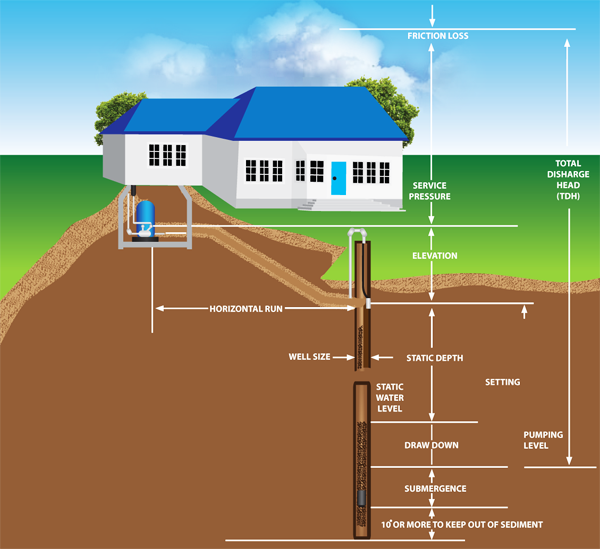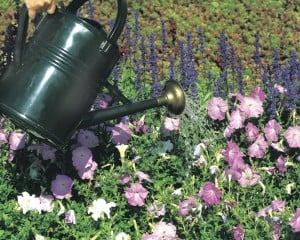Sources of Coliform Bacteria Contamination in Home Well Water

Coliform bacteria are common in the environment, present in the soil and intestines of animals, and are generally not harmful. However, they are one of the most common water contamination problems in home well water.
The presence of these bacteria in well water or spring water usually indicates that the water may be contaminated with germs that can cause disease. These germs can even contaminate well water without any change in taste or odor to the water. Therefore, the US EPA recommends annual testing of residential water wells for coliform bacteria.
Generally, the two categories of coliform bacteria found in well water are total coliform and fecal coliform or E. coli.
The presence of total coliform, by itself, doesn’t imply that the resource is contaminated, but it can reveal that one or more of the more serious types of harmful bacteria, such as fecal or E. coli bacteria, may be present.
If fecal coliforms or E. coli are detected in well water, the first step should be to disinfect your system and identify the source of the bacterial contamination.
Sources of Coliform Bacteria Contamination
If only total coliform is detected (without the presence of fecal coliform or E. coli), the source is most likely from contamination from the environment, introduced during construction or while repairs to plumbing or a water main were underway.
Because there are so many different ways to introduce bacteria into the system, the original well construction can often be the cause of an ongoing bacteria problem that can last for many years.
If fecal coliform or E. coli are detected along with total coliform in drinking water, they are most likely coming from sewage that has entered the drinking water. Waste from humans, rodents, or farm animals can be a principal source of bacteria in the water.
Runoff from agricultural fields, animal feedlots, sewers, or septic systems often causes contamination. Additionally, the overuse or improper storage and disposal of chemicals can poison and contaminate drinking water if they are in close proximity to your well.
Testing For Bacteria
We recommend this state-certified lab water check test for proper testing of fecal coliforms and E. coli. This should be strongly considered when purchasing a new home or after constructing a new well.
What To Do If Fecal Coliform Is Detected
If E. coli or fecal coliform are detected in the drinking water, the first step should be an emergency chlorination that lasts two to five days. At the same time, a system is being disinfected, it is recommended to vigorously boil the drinking and cooking water for one minute before using it.
It is also very important to continue testing the water because if anything happens to the chlorine residual, or if the chlorine demand changes and the consumer doesn’t know about it, the water can become unsafe again.
Prevention of Bacterial Contamination
Your well should be constructed at least a foot above the surface of the ground or have a mound of dirt around it to ensure that rainwater or chemical runoff will not pool near it and seep into it. Also, if you are constructing a new well, it is important to minimize the proximity of possible sources of contamination—the further away, the better!
- Septic Tanks, 50 feet
- Livestock yards, Silos, Septic Leach Fields, 50 feet
- Petroleum Tanks, Liquid-Tight Manure Storage, and Fertilizer Storage and Handling, 100 feet
- Manure Stacks, 250 feet


It is especially important to address these risks before they become an issue and will help save money in the long run. Keeping up to date records of well installations, repairs, and water tests will help you keep ahead of potential issues.
Introduction to the Problem
Coliform bacteria are a large group of bacteria commonly found in the environment, including soil, surface water, and the intestinal tracts of warm-blooded animals, including humans. While most coliform bacteria are harmless, their presence in drinking water can indicate the potential for disease-causing organisms. This makes coliform bacteria a significant concern for public health.
Total coliform bacteria, which include fecal coliform and Escherichia coli (E. coli), are often used as indicators to detect possible contamination in water supplies. The presence of these bacteria in drinking water suggests that the water may be contaminated with pathogens that can cause serious illness. Therefore, regular testing and treatment of water supplies are crucial to prevent the risks associated with bacterial contamination.
Sources of Contamination
Coliform bacteria can enter drinking water through various sources, including human or animal waste, contaminated soil, and surface water. Fecal coliform bacteria, including E. coli, are typically found in the intestinal tracts of warm-blooded animals and can be introduced into water supplies through improper waste disposal, agricultural runoff, or other environmental factors. Animal waste, in particular, can be a significant source of contamination, as it can contain high levels of coliform bacteria.
Additionally, septic systems and other wastewater treatment systems can also contribute to the contamination of water supplies if not properly maintained. Understanding the sources of contamination is crucial in preventing the introduction of coliform bacteria into drinking water.
Private Water Systems
Private water systems, including wells and springs, are more susceptible to coliform bacteria contamination due to their proximity to potential sources of contamination. Shallow wells, in particular, are more vulnerable to contamination from surface water and soil.
Weather conditions, such as rainy weather, can also contribute to the contamination of private water systems. Proper maintenance and testing of private water systems are essential to prevent surface water contamination.
The EPA recommends that private water systems be tested at least once a year for total coliform bacteria, and more frequently if the system has a history of contamination. By taking proactive steps to prevent contamination and regularly testing and treating drinking water, households can reduce the risk of illness associated with coliform bacteria.
Detection and Testing
Detecting coliform bacteria in drinking water is crucial in ensuring water quality and safety. The Environmental Protection Agency (EPA) recommends regular testing of water samples for total coliform bacteria, including fecal coliform and E. coli. Testing typically involves collecting a water sample and sending it to a lab for analysis.
If the initial result is positive, repeat samples may be collected to confirm the presence of coliform bacteria. In some cases, additional testing may be necessary to determine the source of contamination and to identify the most effective treatment options.
Boiling or disinfecting the water can be an effective way to kill coliform bacteria, but it is essential to address the underlying source of contamination to prevent future occurrences.
Health Risks
The presence of coliform bacteria in drinking water can pose significant health risks, particularly for vulnerable populations such as the elderly, young children, and people with weakened immune systems. While most types of coliform bacteria are harmless, some strains of E. coli can cause serious illness, including bloody diarrhea, stomach cramps, and vomiting.
Fecal contamination, in particular, can indicate the presence of disease-causing organisms, making it essential to take prompt action to address the issue. In severe cases, coliform bacteria can cause life-threatening illnesses, emphasizing the need for regular testing and treatment of drinking water.
For more help on removing bacteria from your water, visit our Bacteria page on our Water Problems tab.
If you still have questions, don’t hesitate to e-mail us at support@cleanwaterstore.com, leave us a message on Facebook, or use our online contact form for prompt, personalized assistance from our trained professionals. Thanks for reading!
















